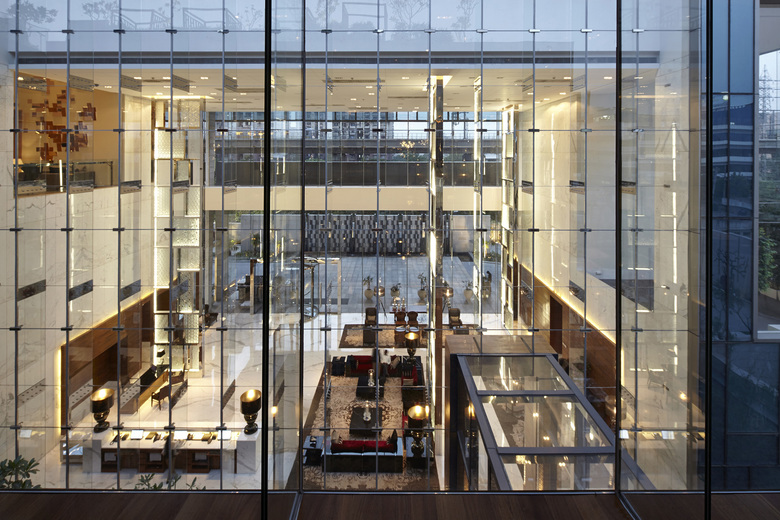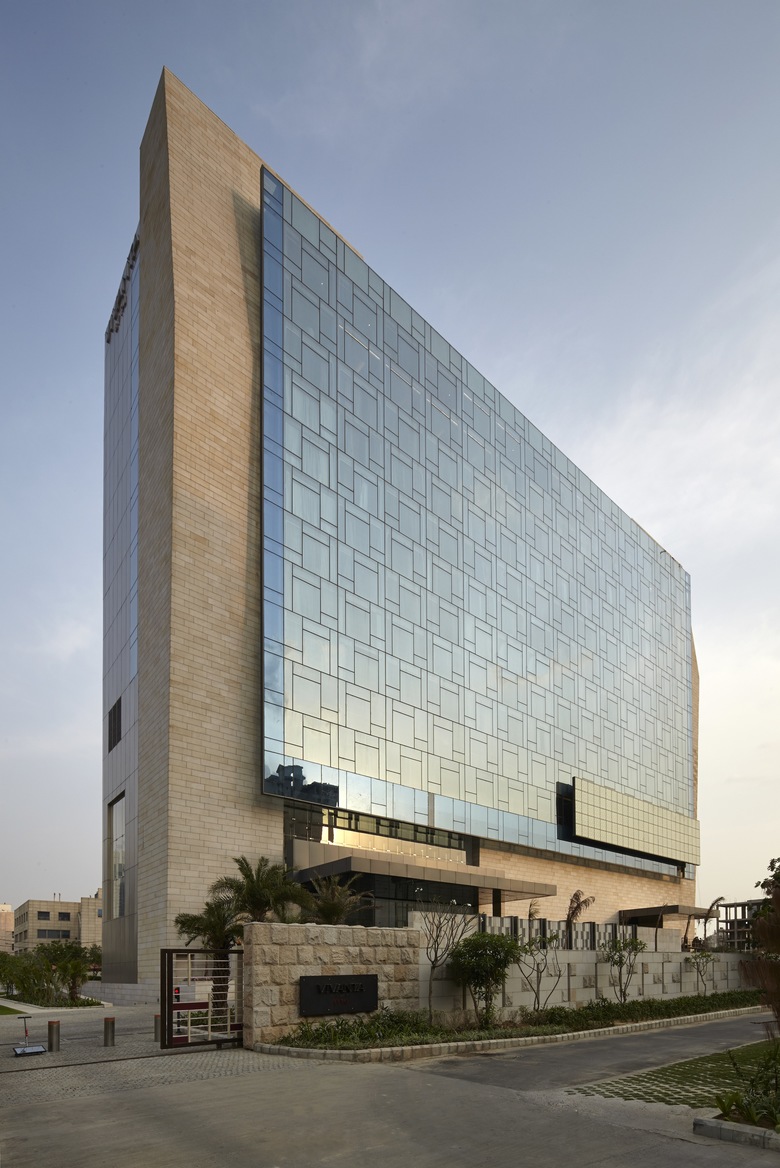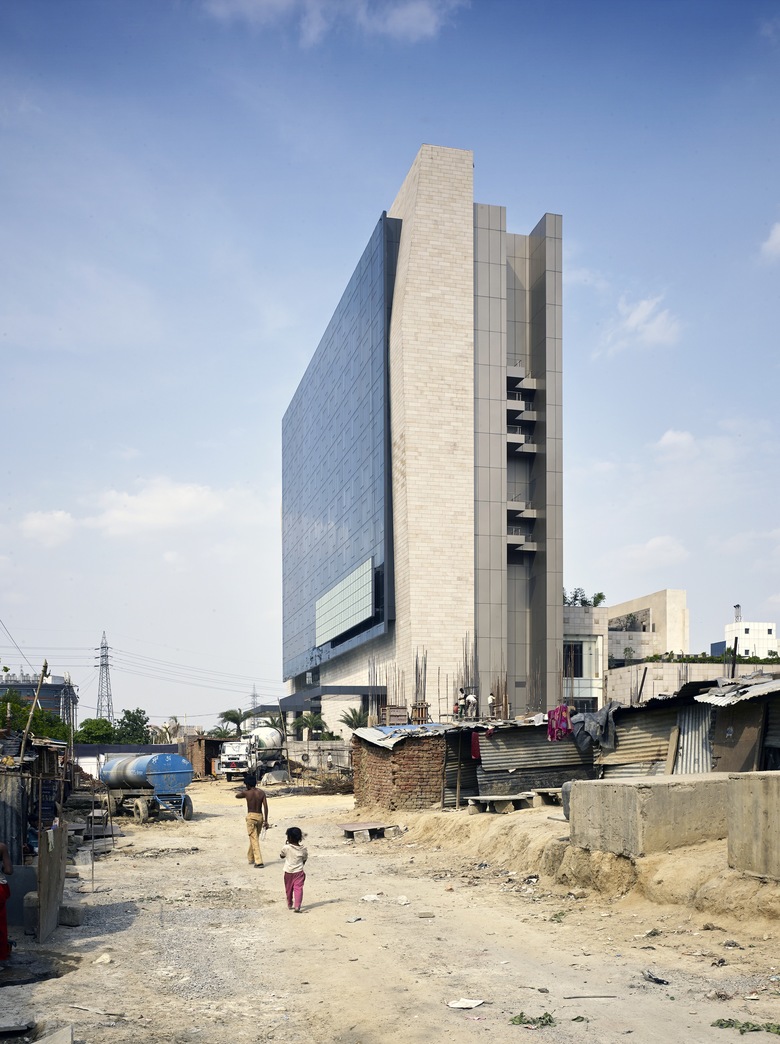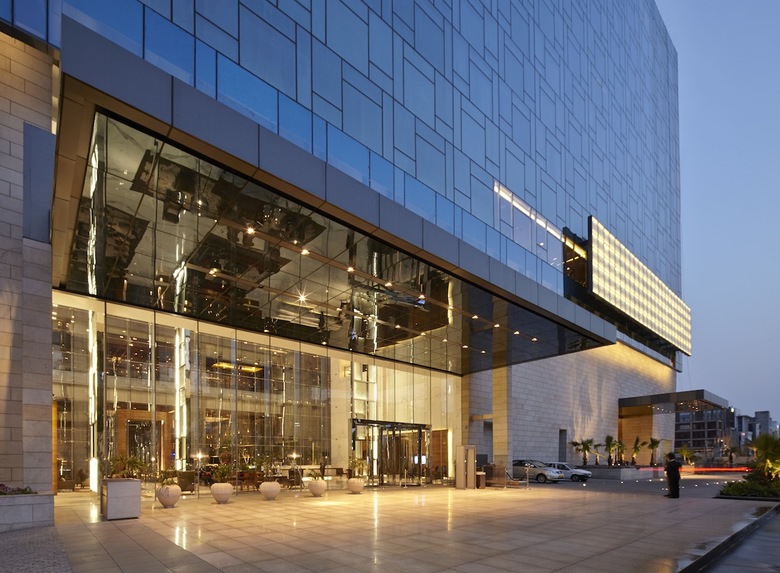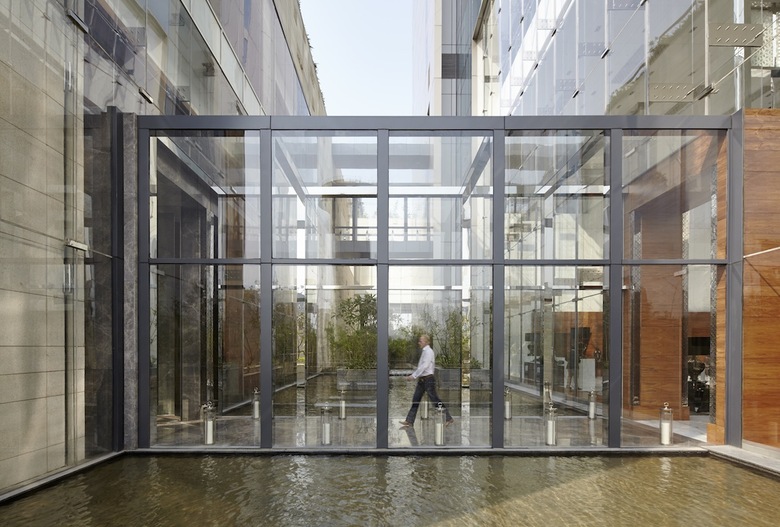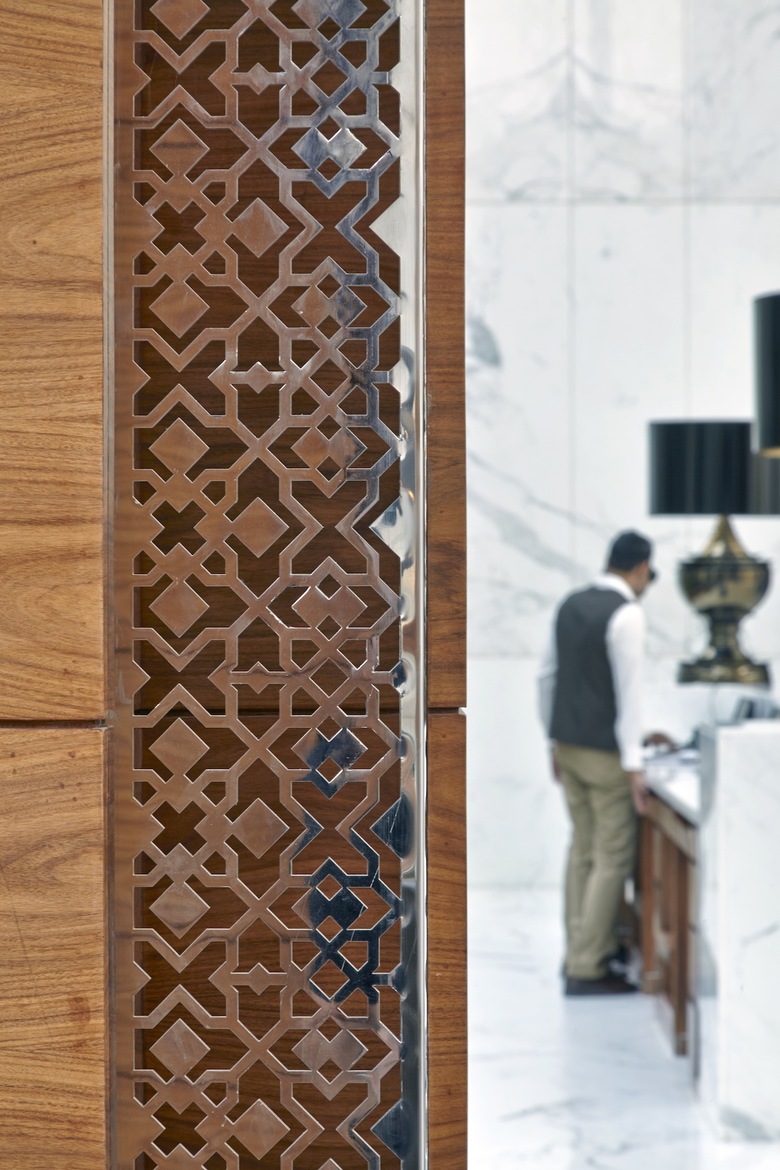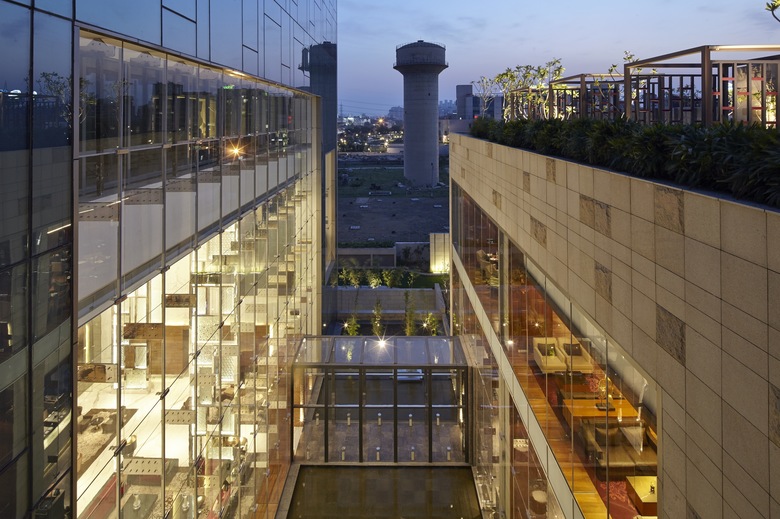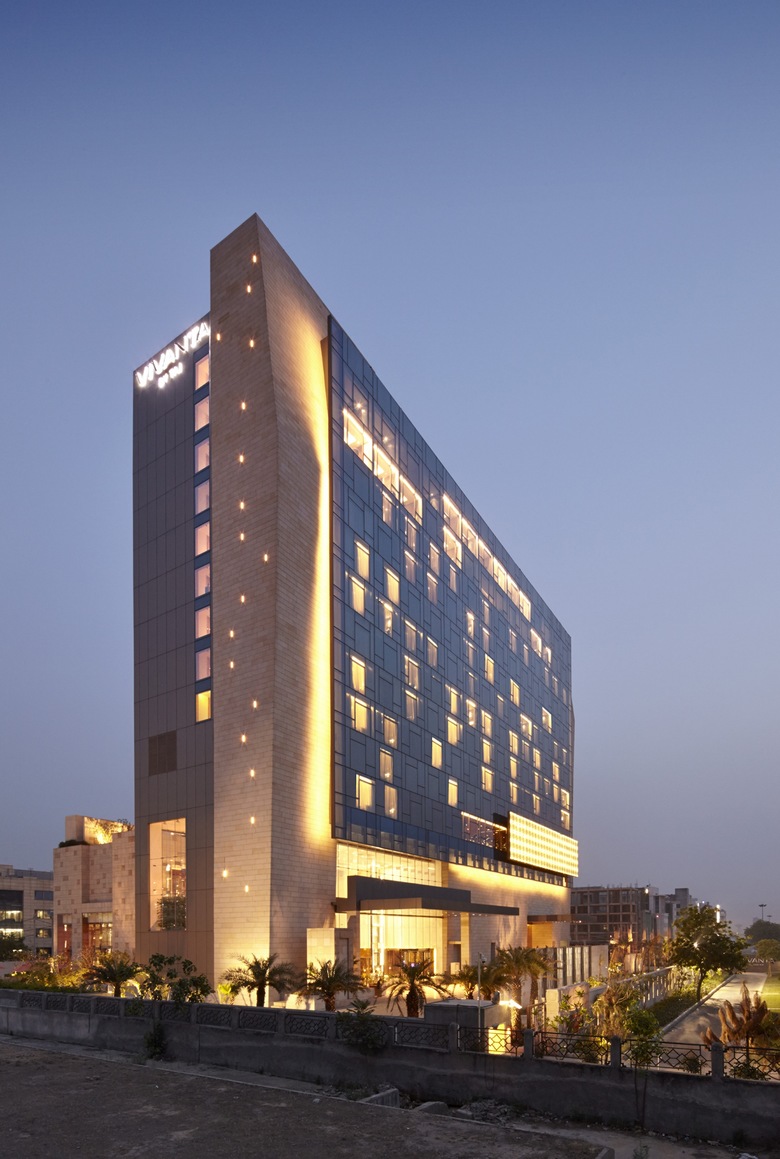WOW Architects
Vivanta by Taj Gurgaon
Business and leisure hotel under the umbrella of the new Vivanta brand by Taj Hotels, Resorts and Palaces, this project resides in the city of Gurgaon, often dubbed the ‘face of new India’.
REDEFINING THE NATIVE
The hotel resides in the city of Gurgaon, often dubbed the ‘Face of New India’. Overlooked as a backward, rural community just a decade ago, Gurgaon has rapidly developed into an IT hub and home to many multinational companies, partly due to its proximity and connectivity to the national capital of New Delhi.
However, this rapid development has not been consistent nor coordinated throughout the urban environment. Indeed, this narrative is a familiar one for architects working in the developed world: the rapid economic growth and the accompanying urbanization has created a world of radical juxtapositions, where glistening contemporary architecture coexists with the poverty, non-existent infrastructure, and inhospitable physical environment.
Whereas the development in China is driven by a strong public sector, the virtual absence of coherent government planning and investment in India has created a free-for-all environment where pockets of the New is stitched into the messy and chaotic urban fabric that is typical of modern India.
Our challenge, then, was to find an approach that, one, resonates with the classic Indian spatial experience and, two, can cut through the noise and chaos of the surrounding environment. The tectonic language must be able to stand up to the visual clutter, the thick layer of dust that envelopes this area, and the constant reminder that Gurgaon is essentially one giant construction site.
FACADE STRATEGY
While the spatial organization is meant to insulate the guests from the chaos of the outside world, the façade design is very much about relating to and negotiating with the messy context. The main mass of the two blocks is clad in granite which renders the building as a piece of rock emerging from the yellow dirt of Gurgaon. The layers of glass and metal that penetrates through the stone mass reaches out to the emerging world of glass skyscrapers in Gurgaon.
The overall experience of the facade is that of something clean, minimal and refined, but the collage of the stone, glass and metal somehow feels one with the assemblage of yellow dirt, concrete, brick and spots of green that adorn the modern Indian landscape.
SPATIAL LAYERING
A hotel, by very definition, needs to provide a space of safety, comfort, and relaxation for the weary traveller. The Vivanta achieves this through a series of interconnected courtyards and layered public spaces that draw on the traditional palace architecture of India. A series of landscaped courtyards are surrounded by the main public interior spaces. These spaces are separate, yet visually connected through layers of glass walls. The unpeeling of the layers of screens, starting from the façade, gradually unveils the internal spaces. Skinning the building reveals the swimming pool, restaurant blocks and other public spaces behind.
The spatial experience is simultaneously private but connected, interior but also continuous with the exterior landscape. The grandness of the main lobby is multiplied by the layers of outdoor courtyards and transparent connections to other public spaces like the main dining room and banquet facilities.
